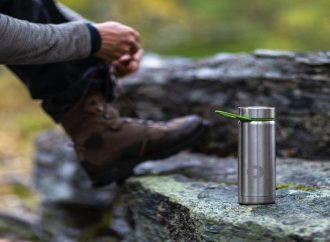Getting to grips with wind power is a skill we highly recommend for a huge number of reasons. In any disaster film, the first thing to go down is the electrical grid – and once this goes, everything is compromised. Fortunately, with the utilisation of wind power, you’re able to get things up and running
Getting to grips with wind power is a skill we highly recommend for a huge number of reasons. In any disaster film, the first thing to go down is the electrical grid – and once this goes, everything is compromised.
Fortunately, with the utilisation of wind power, you’re able to get things up and running again. We also like the idea of wind power in a world before SHTF, because it’s free, completely green, and will save you so much money in the long term, much like solar panels.
To get started, you’ll need a wind turbine – and they’re a lot simpler to set up than you’d expect. Here’s a simple guide for how to set up your own contraption for clean, free energy. It’s an absolutely essential skill that many preppers don’t even consider, and can prove incredibly useful in
Getting Started
Residential wind turbines range in strength, and they usually vary from 400 watts to 20 kilowatts. Depending on what you’ll be using it for, choose carefully, as they do range in price, and they can cost at least £100 whichever route you choose to go down.
As you’re preparing for a SHTF situation where nobody has any power, not you or your neighbours, we highly recommend getting one of the more of these wind turbines to keep your lights on, your mini-fridge running, and phones charged.
If you’re bugging in, this will basically be the only way to keep your home operating as usual, so don’t be afraid to spend the big bucks going all out on all the essential parts you need – it’ll prove itself to be a wise investment quicker than you expect and a relief in grid down situations.
There are a few essential components you’ll need to purchase – a base, a generator, a tower so it can reach the wind, blades, and something to initially power it, ideally batteries.
The Base
Like your home, the foundation of your wind turbine is arguably the most essential component. It is the least complex part, but without a strong foundation, your system will fall, and you’ll be out of luck.
Strong winds are exactly what you’re looking for, but they do also cause a large risk of damaging the structure if it isn’t put in place properly.
Ideally, you want to use concrete as the foundation – there’s a reason every building on the planet uses it for its security, waterproofness and other great benefits you can’t really do without.
As your wind turbine will need to be around 10 metres tall to generate power worth having, the angles and weight is something that should be greatly considered. It’s not difficult to pour your own concrete and bags of post-mix can be bought quite cheaply.
Generator
This is at the heart of your system, and it’s what converts the wind power into electricity. As domestic wind turbines become more common, the market continues to grow, and you can get everything you need only.
Admittedly, they are quite expensive, but the money pays itself back rapidly, and much quicker than solar panels. Companies like Eco Power Shop have a great range suitable for battery charging, water and space heating, and are the perfect instrument to begin your journey into the cheaper, cleaner, alternative everyone could do with.
Tower
Your concrete foundation should hold something like a stand for the tower of your system – and ones made from metal are really the ideal material you should go for. It’s strong, durable, and probably the most reliable piece of equipment you can have.
We recommend shopping around online to find the ideal one, as it’ll be manufactured with pin-point accuracy.
This will likely cost you around £100, but as with every other component of your domestic wind turbine, it’s a worthy investment, when you’re either prepping for a SHTF situation, or simply looking to make the carbon footprint of your home smaller.
If you do choose to make your own tower, make sure you measure everything so as not to have wasted your money. It’s best to have the thing you’re securing your tower into, already in place, as there’s a much smaller chance of messing up.
Blades
As with every part of this system, the blades should be made of a material that’s strong and can handle heavy gales the UK receives. This isn’t as simple as going for a metal, or a hard plastic – you need to think of something more specialist.
Full scale wind turbines generally consist of glass fibre reinforced polyester, or glass fibre reinforced epoxy. Or even, for a lighter alternative, carbon fibre reinforced epoxy.
Not only does this result in a stronger system you can rely on, it also means an absence of corrosion, courtesy of resistant materials. Find out more here where you can take a closer look at industry go-to methods for proven success.
Setting Up
And now – the creation stage. Once you’ve got all the components you need, it’s time to build and set up your wind turbine properly. Begin by creating your foundation, ideally pouring a concrete base for you to start assembling from. You’ll then need to build the foundation, with the spindle and spokes.
Following this, it’s time to build upwards, but on the ground, so you can still reach it when placing the turbine at the top. Make sure it’s all secured in, with screws all in place properly. When it’s in place, it’s time to check that the generator is in check.
Once this is done, it’s time to connect the generator to the base of the tower, and then connect it to your home circuit – if possible, get a professional electrician to help you with this, as it is undeniably the riskiest part of the entire process.
Summary
As you can see, it isn’t difficult to set up your wind turbine, besides the final stage when connecting the generator – but it is expensive.
However, with the amount of money that’s saved almost immediately, we strongly recommend this as an investment, especially in a grid down situation when you need to keep your fridge running and the lights on.





















